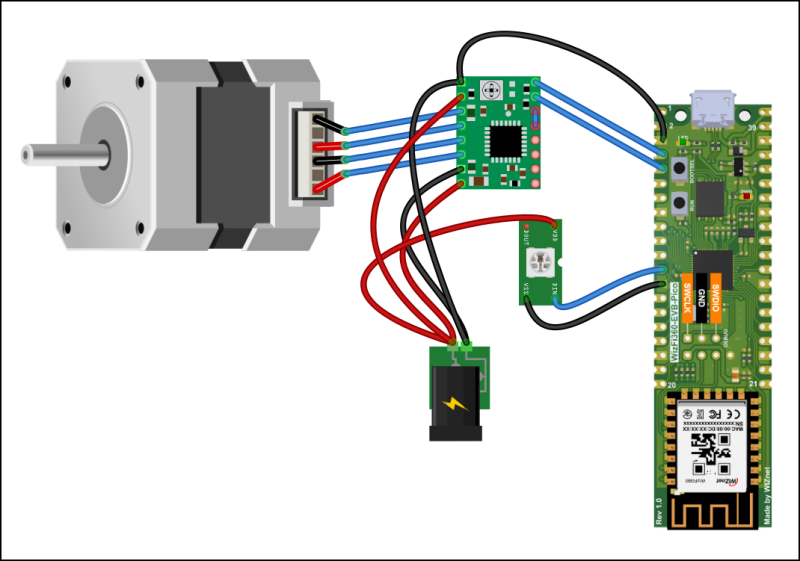Sometimes, I thought that I need a display turntable when I upload some image or video on website. So, I decided to make a display turntable using WizFi360-EVB-Pico. You can see the whole communication flow below summary diagram. Dedicated android app send UDP control packet (With modified Art-Net protocol) to WizFi360-EVB-Pico board. after then Pico board handle stepper motor and leds.
First, I connected the circuit as shown below and tested the functions. Works well.
After then I decided to make an own PCB for using universal purpose.Below image is what I made. It can use SPI, I2C, UART, A4988 stepper motor driver and WS2812 LED interface
All components are placed like below.
Used 17HS4023 Stepper Motor with belt pulley for motor mount.
Used WS2812 LED strip
Placed power jack, power switch and OLED at front side. OLED shows log information such as IP while boot-up
Assembled all parts. Below is my first DIY display turntable.
Arduino-IDE
Added below link to additional boards manager in preferences.
https://github.com/earlephilhower/arduino-pico/releases/download/global/package_rp2040_index.jsonthen select WizFi360-EVB-Pico board.
All functions of display turntable can be controlled by WIFI. I used Arduino Ide with WizFi360_arduino_library. It can easily use WIFI interface on WizFi360-EVB-Pico. and Between mobile phone and WizFi360-EVB-Pico, used modified Art-Net protocol for motor and led control. Refer to ArtnetWifi (https://github.com/rstephan/ArtnetWifi) library.
Stepper MotorI seperated motor and led control. In case of stepper motor, used RPI_PICO_TimerInterrrup library for handling A4988 stepper motor driver.
WS2812 LEDUsed very well-known Adafruit_Neopixel library.
OLED (SSD1306)Used SSD1306Ascii library to display log message.
Dedicated turntable controller application on Android mobile phoneI wrote an android application just for this display turntable like below.
Function of each button
In case of 7th button, can be used like below.
Pressed 7th button, rotate turntable in every 90 degrees after then take a photo until reached 360 degrees. Therefore, take an each side of photos (front, left, right and back). Refer to below youtube video.
Youtube











Comments
Please log in or sign up to comment.